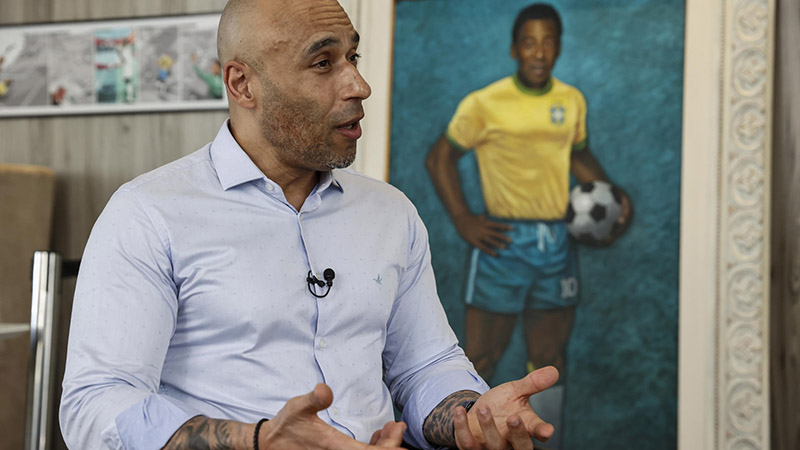A year after the death of Brazilian star Pelé, his son Edinho did an analysis of local football and the selection, which did not have a good 2023
The ‘Seleo’ had a fateful campaign in 2023 and Santos descended for the first time in its history. What would Pelé, who died a year ago, think of the bad time of the two teams where he bargained his legend? “Our ‘king’ would be very concerned,” Edinho, one of his seven children, responds in an interview with AFP on the occasion of the first anniversary of the death, on December 29, of which many consider the best footballer of all time.
But this crisis “did not happen overnight, these are important, complex problems,” adds the exporter of the ‘Peixe’ (1991, 1994-1998), turned coach.

Pelé died at 82 in Sao Paulo, from colon cancer. Until the end, he was watching the two teams he immortalized and defended for most of his 21-year career (1956-1977). “It seems that it was yesterday when our king left us,” says his 53-year-old son, the most visible voice of Edson Arantes do Nascimento’s family.
With Brazil’s ‘green-marela’ cottage, Pelé was the only footballer to win three World Cups (1958, 1962, 1970) and with the white or Albinegra del Santos he won most of his trophies, including six leagues, two Libertadores Cups and two Intercontinentals. With more than a thousand goals (1,283), according to his accounts, he made Brazilian football famous and changed the meaning of the number 10.
Level down
But 2023 would have dealt a hard blow: for the first time in his 111 years, Santos signed his descent in the last league match at Vila Belmiro Stadium, where ‘O Rei’ was veiled and fired by more than 230,000 people in this port city of the state of Sao Paulo.
“It wasn’t a surprise. Those who accompany the day-to-day club could anticipate a difficult scenario that ended up materializing,” says Edinho, referring to years of financial, sports and institutional crises. After the debacle, the club plans to ban the use of the ’10’ while in Serie B.
The ‘Canarinha’, on his side, is also in trouble on and off the field. The penta-champions of the world face a bid for the presidency of the Brazilian Football Confederation (CBF), there are doubts on their technical bench and, after an unprecedented streak of bad results, are sixth among ten selections in the South American qualifier towards the 2026 World Cup.
“We live a low (…) We still have great players, but before we had more high-level athletes than we have today,” says Edinho, who until February led the Londrina (Paraná, south) in second division. “There’s no doubt that this year, if (Pelé) had been here, I would have been very sad,” he sums up.
King Pelé Day
Throughout the year, Pelé, whose figure in Brazil awakens fewer signs of passion than that of Diego Maradona, who died in 2020, in Argentina, nevertheless received a cataract of tributes. It is or will be the name of stadiums in Cape Verde, Colombia or Guinea-Bissau, as well as a word synonymous with “exceptional, incomparable, unique” in a popular Portuguese language dictionary.
The Brazilian Congress also seeks to make November 19 the “Dia do Rei Pelé,” because on that date of 1969 it scored its goal a thousand, and the award awarded by the Brazilian Olympic Committee (COB) to the best athletes of the year is now called “Troféu Rei Pelé.”
Edinho claims to be emotionally anchored on December 29, 2022. On that day, ‘O Rei’ died of cancer in Sao Paulo. He recalls that he talked about football with his father “until the last moments”; now he intends to “perpetrate his legacy” forever.
In the city of Santos, the mausoleum was opened to the public in May where his remains rest, which has since been visited by more than six thousand people, administrators told AFP.
For the first anniversary of his death on Friday, the acts will be discreet. The six living children of ‘O Rei’ will hold an “intimate” virtual meeting, because some live in the United States. In front of the Pelé Museum in Santos, a mass is planned in his honor.
This article has been translated from the original which first appeared in El Salvador


